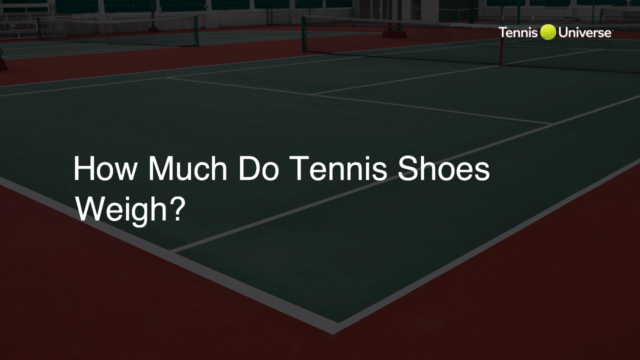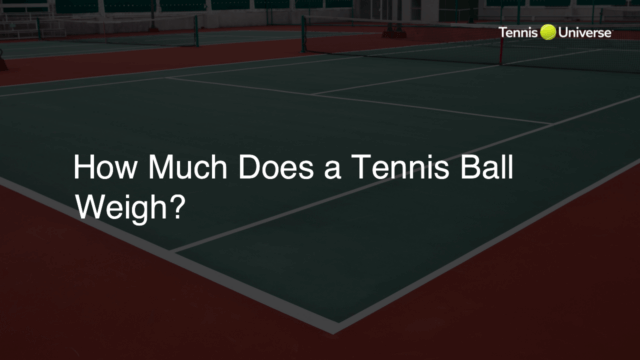A tennis ball has a diameter ranging between 2.575 to 2.700 inches (65.41 to 68.58 mm) and a circumference of about 8.16 inches (207.26 mm).
Tennis Ball Dimensions
A tennis ball has a diameter that ranges between 2.575 to 2.700 inches (65.41 to 68.58 mm) and a circumference of approximately 8.16 inches (207.26 mm). These dimensions are standardized by the International Tennis Federation (ITF) and are essential to ensure consistency in the game.
Tennis Ball Pressure
In addition to size, the pressure inside a tennis ball also plays a crucial role in performance. A tennis ball must have an internal pressure of approximately 12 psi (pounds per square inch) to ensure optimal bounce, speed, and control when struck with a tennis racket.
Tennis Ball Types
There are three main types of tennis balls based on their internal pressure and construction: pressurized, pressureless, and special-use balls. Pressurized balls offer greater bounce and speed but may lose pressure over time. Pressureless balls maintain consistent performance but may be less responsive to spin. Special-use balls may have different colors, pressures, or materials to cater to specific court surfaces, weather conditions, or player skill levels.
Tennis Ball Material and Construction
Tennis balls consist of a rubber core covered by a felt material, typically a blend of wool and nylon. The rubber provides the necessary bounce, while the felt helps to grip the surface of the court and the strings of the tennis racket, enabling spin and control during play.
Choosing the Right Tennis Ball
When selecting a tennis ball, consider your skill level, playing style, and the court surface you typically play on. Recreational players may opt for pressureless or special-use balls, while competitive players usually prefer pressurized balls for better performance. Additionally, ensure the balls you choose are ITF-approved to guarantee consistency and an enjoyable playing experience.
Effects of Tennis Ball Size and Weight on Performance
The size and weight of a tennis ball can significantly impact a player’s performance during a match. Heavier balls tend to create more resistance and require more energy to hit, while lighter balls may be easier to manoeuvre but offer less control. To find the ideal tennis ball for your performance needs, consider testing different brands and types of balls, and incorporate helpful tennis tips from experienced players or coaches.
Tennis Ball Weight
The International Tennis Federation (ITF) also regulates the weight of tennis balls, which should weigh between 56.0 to 59.4 grams (1.975 to 2.095 ounces). This weight range ensures that the balls are suitable for all skill levels, from beginners to professional players.
Effects of Altitude on Tennis Ball Performance
At higher altitudes, the air pressure decreases, causing pressurized tennis balls to bounce higher and travel faster. To compensate for this effect, the ITF allows the use of special high-altitude tennis balls with lower internal pressure, minimizing bounce and maintaining a consistent playing experience at different altitudes.
Ball Durability
Tennis ball durability depends on the construction, materials, and the frequency and intensity of play. Pressurized balls tend to wear out faster as they lose internal pressure, impacting their bounce and performance. Pressureless balls, on the other hand, maintain their bounce longer but may gradually lose their felt covering, affecting their grip and response to spin. Regularly replacing worn-out tennis balls can help ensure optimal performance during play.
Tennis Tips for Ball Selection and Care
Proper tennis ball selection and care can impact your overall game experience and performance. Use the following tennis tips:
- Choose ITF-approved tennis balls that match your skill level, playing style, and court surface.
- Replace tennis balls regularly to maintain optimal bounce, especially when playing in competitive matches.
- Rotate and store tennis balls evenly to reduce wear and tear and extend their usable lifespan.
- Consider performance, durability, and price when selecting the ideal tennis ball for your needs.
Understanding tennis ball dimensions, types, and care can help you make more informed choices and ultimately improve your playing experience.
FAQ Section
In this section, we address common questions related to tennis ball size, selection, and care based on the contents of this blog post:
What is the official size of a tennis ball?
The official diameter of a tennis ball ranges between 2.575 to 2.700 inches (65.41 to 68.58 mm), with a circumference of approximately 8.16 inches (207.26 mm).
Does the weight of a tennis ball affect the performance of players?
Yes, the weight of a tennis ball can significantly impact a player’s performance. Heavier balls create more resistance and require more energy to hit, while lighter balls may be easier to manoeuvre but offer less control.
How do I choose the appropriate tennis ball for my skill level and playing style?
When selecting a tennis ball, consider your skill level, playing style, and court surface preferences. Test different brands and types of balls, and experiment with pressurized, pressureless, and special-use options to find the ideal ball for you.
How often should I replace my tennis balls?
Replace tennis balls when their performance is affected by wear and tear or when they lose their bounce, grip, or responsiveness. Competitive players should replace tennis balls more frequently, while casual players may use them longer before replacement.
What is the difference between pressurized and pressureless tennis balls?
Pressurized tennis balls have a higher internal pressure, providing greater bounce and response to spin, but tend to lose pressure over time. Pressureless balls maintain consistent performance longer but may be less responsive and might lose their felt covering over time.












